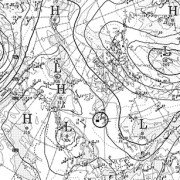Soybean Storage and Conditioning
Now that your crops are in the bin, it’s important to learn how to keep them conditioned and stored properly.
Throughout the winter months it’s important to monitor your soybean temperature, and to aerate your bins.
If you haven’t sold any beans then coring out your bin can be an option to remove some fines, and help stir the grain a bit.
It is important to make sure that soybeans are stored at a 14% moisture or lower. Don’t assume that because your beans went into the bin really dry, you don’t have to aerate. Those low moisture beans are still hot and need to have the field heat removed.
When should you run the fan?
Air temperature and relative humidity levels are the two most important things you need to focus on when dealing with your fanning operation. It is important to check both of these things constantly throughout the day so you know how long to run the fan.
In order to have effective drying the outside air has to be drier than the inside air. The fan operation is limited to temperature and relative humidity levels. On some days, drying can be accomplished from 9 AM until midnight, while on others it may only be from 9 AM to 6 PM or sometimes even shorter. Times will change depending on size of bin, amount of grain, etc.
It is important to remember that the beans at the top of the bin will usually be the last to dry, and sometimes can have the highest moisture levels from drying, or if you have been aerating in the past.
Important tips for winter storage of soybeans:
-
Aerate stored soybeans to maintain grain temperature between 40°F to 45°F (4.4°C to 7.2°C) in the winter. These temperatures reduce mold, insect activity and moisture movement within the bin
-
Check stored soybeans for heating or spoilage every two weeks in cold weather. In addition, conduct periodic germination tests to monitor viability of seed beans
-
Monitor grain and aerate monthly to maintain uniform temperature and moisture levels throughout. Aerate more often if moisture or temperatures increase
-
For winter storage, store beans at 13% moisture or less
-
Get the cone off the top of the bin (most times that is where there will be problems as air will take the easiest route and not go to the top of the cone.
-
If you have bins with no heat cables, keep an eye on bin roofs for snow or frost. A quick visual check whenever possible may save a bin.
-
When running fans remember that soybeans have 25% less airflow resistance than corn, so fans sized for corn drying will produce greater airflow through soybeans. This means that cooling will occur quicker
-
Growers can also use a 6’ or 10’ probe to collect samples from various depths at bin center and outwards and then monitor moisture and temperature with a hand-held meter. Sensors can also be hung on cables in bins, allowing growers to track moisture and temperature and look for hot spots.
-
By checking stored grain weekly, growers can identify problems before they become unmanageable. Even grain in good condition in the fall can develop problems over the winter.
-
Soybean seed stored over the next planting season should be held at 12% moisture or less
-
If heating, mold or foul odors occur, unload the bin and sell.
-
It is a common practice to pull out a load from the core of the bin where grain tends to stay moist and overheat

Estimated aeration cooling and warming cycles (hours)
Aeration fan timing depends largely on the airflow (cubic feet per minute [cfm] per bushel) produced by the aeration fan(s). It is recommended that air be pushed from the bottom to the top of the grain and the temperature of the grain be monitored in the headspace area to determine when the cooling/warming front reached the top of the grain.
Once desired grain temperature has been reached, temperature should remain fairly stable in the grain mass because grain is an excellent insulator as long as there are no air movements through the grain mass. Thus, after each aeration cycle is complete, the aeration fan should be blocked off to prevent unwanted air flows.

Are there any websites that can help me know when to turn on my fans?
Yes. Weather Central – BINcast System
BINcast helps by providing you with the predicted equilibrium moisture content (EMC) for your bin for the next 5 days. This will help you know when to turn your fan on.
In conclusion
It’s important for a grower to constantly monitor their bins throughout the winter. If you have any questions please contact your local Thompsons Agricultural Consultant or branch. We’re here to help.









